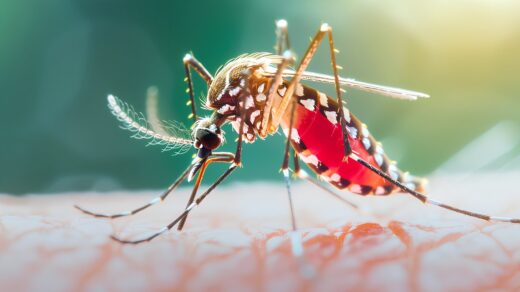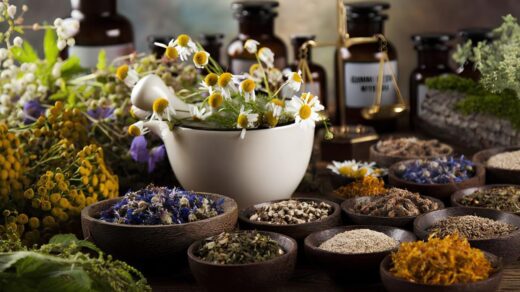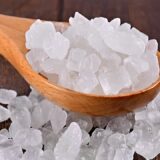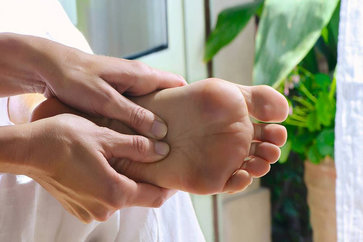Kumkumadi Tailam: Skin Benefits and How to Prepare It
Kumkumadi Tailam is a popular Ayurvedic oil renowned for its remarkable benefits for the skin. Often referred to as a “miraculous beauty elixir,” this luxurious oil is specifically formulated to enhance skin texture, tone, and radiance. Crafted from a unique blend of herbs and oils, it features saffron (Kesar) as its standout ingredient, prized for its skin-brightening properties.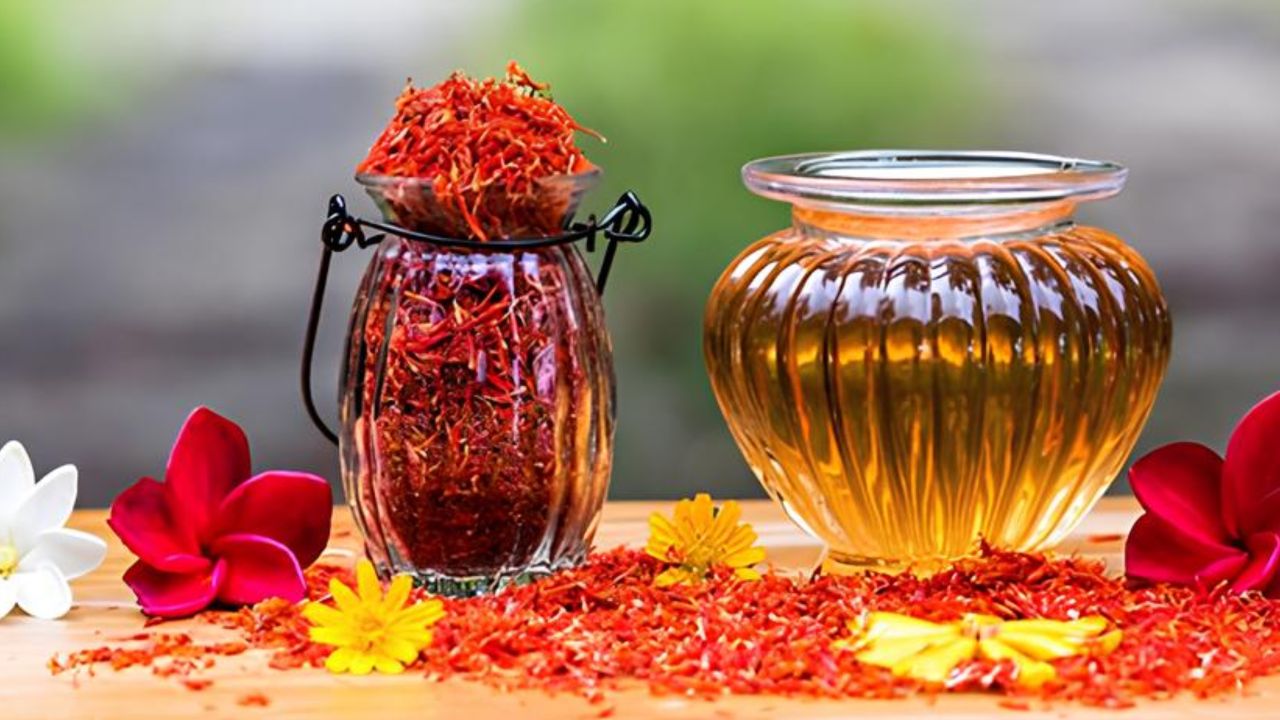
In this article, we’ll delve into the numerous benefits of Kumkumadi Tailam, explore its key ingredients and their properties, and provide effective tips for incorporating this potent oil into your skincare routine.
Whether you’re looking to combat dryness, reduce pigmentation, or achieve a healthy glow, Kumkumadi Tailam can be a transformative addition to your beauty regimen. Let’s uncover how this ancient formulation can help you achieve the luminous skin you desire.
What is Kumkumadi Tailam?
The name Kumkumadi is derived from “Kumkuma,” the Sanskrit word for saffron. This oil is often prescribed in Ayurvedic skincare routines to combat blemishes, pigmentation, dullness, and aging.
Traditionally, Kumkumadi Tailam is recommended for face massages and is suitable for most skin types, particularly dry and combination skin.
Kumkumadi Tailam in Ayurveda
Kumkumadi Tailam holds a significant place in Ayurvedic skincare due to its holistic approach to beauty and wellness. This traditional formulation is crafted using a blend of natural herbs and oils, making it not only a topical treatment but also a reflection of Ayurveda’s principles of balance and harmony.
Key Aspects of Kumkumadi Tailam in Ayurveda
1. Herbal Composition: The oil is made from a carefully selected mix of herbs, each chosen for its specific properties. Ingredients like saffron, licorice, and turmeric work synergistically to nourish the skin, improve complexion, and promote overall skin health.
2. Dosha Balancing: In Ayurveda, each person is believed to have a unique constitution (dosha). Kumkumadi Tailam is thought to be suitable for all doshas, helping to balance Vata, Pitta, and Kapha, which contributes to healthy skin.
3. Rasayana Properties: Kumkumadi Tailam is considered a Rasayana, or rejuvenating formulation, which aims to revitalize and strengthen the skin. It supports the body’s natural ability to heal and regenerate.
4. Holistic Benefits: Beyond its cosmetic benefits, this oil is believed to provide emotional and mental well-being. The calming properties of its ingredients can soothe the mind, enhancing the overall experience of self-care.
5. Traditional Usage: Historically, Kumkumadi Tailam has been used in Ayurvedic practices not just for beauty, but also for treating various skin conditions, including blemishes, dark circles, and uneven skin tone.
6. Application Method: Ayurvedic wisdom emphasizes the importance of how the oil is applied. Gentle massage with Kumkumadi Tailam stimulates circulation, enhances absorption, and promotes a sense of relaxation.
In summary, Kumkumadi Tailam is more than just a skincare product; it embodies the principles of Ayurveda, focusing on natural beauty and holistic well-being.
Its rich blend of ingredients not only enhances the skin’s appearance but also nurtures overall health, making it a cherished elixir in Ayurvedic practice.
How to Make Kumkumadi Tailam
Kumkumadi Tailam is a traditional Ayurvedic formulation known for its skin-enhancing properties. Below is a step-by-step guide on how to prepare this potent oil, along with the required ingredients.
Ingredients
Herbs for Decoction (Kwath Dravya):
- 48 parts of Kesar (saffron) – Crocus sativus
- 48 parts of Lal Chandan (red sandalwood) – Pterocarpus santalinus
- 48 parts of Manjistha – Rubia cordifolia
- 48 parts of Yashtimadhu (licorice) – Glycyrrhiza glabra
- 48 parts of Laksha (lac) – Laccifer lacca
- 48 parts of Vat Vriksha (Indian banyan) – Ficus benghalensis
- 48 parts of Pakar (Java fig) – Ficus lacor
- 48 parts of Nilkand (blue lotus) – Nymphaea stellata
- 48 parts of Kamal Kesar (sacred lotus) – Nelumbo nucifera
- 48 parts of Daruhaldi – Berberis aristata
- 48 parts of Ushira (vetiver) – Vetiveria zizanioides
- 48 parts of Padmaka – Prunus cerasoides
Dashamoolas:
- 48 parts of Agnimantha – Premna mucronata
- 48 parts of Bael – Aegle marmelos
- 48 parts of Brihati – Solanum indicum
- 48 parts of Gokshura – Tribulus terrestris
- 48 parts of Kantakari – Solanum xanthocarpum
- 48 parts of Gambhari – Gmelina arborea
- 48 parts of Patala – Stereospermum suaveolens
- 48 parts of Shalaparni – Desmodium gangeticum
- 48 parts of Prishnaparni – Uraria picta
- 48 parts of Shyonaka – Oroxylum indicum
Herbs for Paste (Kalka Dravya):
- 12 parts of Manjistha – Rubia cordifolia
- 12 parts of Yashtimadhu (licorice) – Glycyrrhiza glabra
- 12 parts of Mahua – Madhuca longifolia
- 12 parts of Laksha (lac) – Laccifer lacca
- 12 parts of Pattanga – Caesalpinia sappan
Other Ingredients:
- 192 ml of Sesame Oil
- 384 ml of Goat Milk
- Rose Water (as needed)
Prepare the Herbs:
- Start with sun-dried, powdered forms of each herb used for the decoction.
Make the Decoction (Kwath):
- Boil the powdered herbs in a suitable quantity of water. Allow it to simmer until the liquid reduces to one-fourth of its original volume.
- Filter the decoction and set it aside.
Create the Herbal Paste (Kalka):
- Take the herbs designated for the kalka and grind them into a smooth paste using a little water.
Combine Ingredients:
- In a suitable vessel, mix the kalka paste with sesame oil, goat’s milk, and the previously prepared decoction.
Simmer the Mixture:
- Heat this mixture on a low flame, stirring continuously. Allow it to simmer until most of the water evaporates, leaving behind a concentrated oil.
Add Saffron and Rose Water:
- Prepare a tincture of saffron and mix it with rose water. Add this mixture to the oil.
Cool and Store:
- Let the oil cool down, then transfer it to a dark glass bottle for preservation.
Your magical Kumkumadi Tailam is now ready for use! Enjoy the benefits of this Ayurvedic beauty elixir for glowing, radiant skin.
Benefits of the Ingredients in Kumkumadi Tailam
1.Kumkuma (Saffron):
Saffron (Crocus sativus) is a powerful antioxidant that lightens skin tone and enhances complexion. It balances Pitta and Vata doshas, reduces dark circles, rejuvenates dull skin, prevents signs of aging, and soothes irritation for healthier, youthful skin.
2. Manjistha:
This potent blood purifier enhances circulation and promotes a clear complexion. Its antioxidant properties combat free radicals, preventing premature aging. By detoxifying the skin and reducing blemishes, manjistha supports a smoother, more radiant texture and a youthful appearance.
3. Yashtimadhu (Indian Licorice):
The roots of Glycyrrhiza glabra alleviate Pitta issues and urinary retention, aiding wound healing and reducing inflammation. Known for lightening hyperpigmentation and soothing sunburn, it supports sensitive skin by calming irritation and maintaining moisture for a healthy complexion.
4. Chandana (Sandalwood):
Renowned for its cooling properties, sandalwood soothes the skin, reduces inflammation, and enhances complexion. Its calming aroma relaxes the mind, while its antibacterial qualities help prevent acne, promoting smoother, hydrated skin and diminishing the appearance of fine lines.
5. Laksha:
This resin from the lac insect aids wound healing and alleviates burning sensations. Its anti-inflammatory properties soothe irritation, while acting as a protective barrier to retain moisture, promoting hydration and improving skin texture for a smoother, supple complexion.
6. Daruharidra:
Known for its antiseptic and anti-inflammatory properties, Daruharidra combats infections, promotes skin healing, and reduces scars. It brightens the complexion, alleviates redness, and protects against environmental stressors, leading to a more balanced and radiant skin appearance over time.
7. Vetiver:
Vetiver has antiseptic properties, calms irritated skin, and improves circulation. Its cooling effect provides relief for inflamed skin, while its hydrating qualities retain moisture, promoting skin elasticity. Regular use enhances skin vitality and contributes to a youthful appearance.
8. Padmaka:
Lotus extracts reduce inflammation and hydrate dry skin. Rich in antioxidants, they protect against oxidative stress, calm irritation, and improve skin texture. Regular use brightens the complexion and reduces pigmentation, making it a valuable addition for radiant skin.
9. Nilotpala:
Balancing Pitta and Kapha, this water lily nourishes and moisturizes the skin. Its soothing properties alleviate redness and discomfort while locking in moisture. Regular use supports skin renewal, leading to a youthful, revitalized complexion.
10. Vat Vriksha:
Effective for treating moles and wounds, this herb prevents infections and tightens skin. Its detoxifying effects cleanse impurities and promote circulation, resulting in rejuvenated, vibrant skin with fewer blemishes.
11. Kamala Kesara:
This natural skin conditioner hydrates and prevents acne, ensuring skin elasticity and suppleness. Its soothing properties benefit sensitive skin, while antibacterial effects combat acne, leading to a radiant complexion free from dryness and irritation.
Dashamoola (10 Medicinal Roots) Used in Kumkumadi Tailam
The combination of these ten roots is excellent for normalizing Vata aggravations. They detoxify and nourish the skin, improve circulation, and reduce discolorations and fine lines.
This unique blend works synergistically to enhance the skin’s natural healing processes, ensuring a more youthful and vibrant appearance.
Each root plays a specific role in promoting overall skin health, making Dashamoola a vital component of Kumkumadi Tailam.
1. Bilva (Bael):
Promotes skin glow and texture, reducing dark circles and blemishes. Its rich nutritional profile helps rejuvenate tired skin and adds a natural radiance. Additionally, bilva’s antioxidant properties protect the skin from environmental stressors, preventing premature aging.
2. Agnimantha:
Enhances skin radiance, addressing signs of aging and providing a natural glow. This root also supports detoxification processes, helping to clear impurities from the skin and promote a clearer complexion. Its anti-inflammatory effects can soothe irritated skin, making it ideal for sensitive types.
3. Shyonaka:
Detoxifies blood cleanses wounds, and supports faster healing. Its ability to promote circulation enhances nutrient delivery to skin cells, resulting in a healthier, more vibrant appearance. Shyonaka is also beneficial in reducing the appearance of scars and blemishes.
4. Gambhari:
Reduces inflammation, aids wound healing, and cleanses the skin. Its soothing properties help alleviate redness and irritation, promoting an even skin tone. Gambhari is particularly effective for acne-prone skin, as it helps to prevent breakouts.
5. Patala:
Purifies blood, treats burns and wounds, and relieves pain. This herb is renowned for its cooling properties, making it suitable for calming inflamed skin. Patala’s ability to promote skin regeneration ensures that damaged skin heals quickly and effectively.
6. Shalaparni:
Treats allergic conditions and infections, relieving redness and dryness. It is known for its moisturizing effects, which help maintain skin hydration. Shalaparni also supports the skin’s barrier function, preventing external irritants from causing damage.
7. Prishnaparni:
Supports wound healing and prevents skin infections. Its regenerative properties encourage the growth of new skin cells, promoting a healthy complexion. This root is particularly beneficial for individuals with sensitive or reactive skin.
8. Gokshura:
Acts as a skin emollient, treating infections and signs of aging. It helps to hydrate the skin and improve its texture, making it feel soft and supple. Gokshura’s antioxidant properties further protect the skin from oxidative stress.
9. Brihati:
Reduces Vata disorders and nourishes the skin. It is known for its ability to enhance skin elasticity and firmness, combating the appearance of fine lines. Brihati’s soothing properties also help calm irritated skin, contributing to an even tone.
10. Kantakari:
Treats skin diseases and promotes overall skin health. This herb is effective in addressing various skin conditions, including eczema and psoriasis. Its anti-inflammatory properties help reduce discomfort and redness, promoting a clearer complexion.
Additional Herbs
11. Madhuka (Mahua):
Soothes inflammatory skin conditions and relieves itching and burning. Its nourishing properties help restore the skin’s natural barrier, ensuring long-lasting hydration. Madhuka also has antimicrobial effects, making it beneficial for treating minor cuts and scrapes.
12. Pattanga:
Purifies blood and treats conditions like acne, pimples, and boils. This herb is particularly effective in regulating oil production, helping to prevent clogged pores. Pattanga’s detoxifying effects also contribute to a clearer, healthier complexion by removing impurities.
Each of these ingredients contributes to the overall effectiveness of Kumkumadi Tailam, making it a powerful elixir for healthy, radiant skin.
The unique blend of medicinal properties ensures that the oil not only addresses existing skin concerns but also promotes long-term skin health and vitality.
Regular use can lead to noticeable improvements in skin texture, tone, and overall appearance, making it a cherished addition to any skincare regimen.
Benefits and How to Use Kumkumadi Tailam
1. Improves Complexion
Benefits: Saffron in Kumkumadi Tailam is renowned for its skin-lightening properties, enhancing overall complexion and providing a natural glow. Its antioxidant and antibacterial qualities promote blood circulation and rejuvenate skin cells.
How to Use: Mix equal parts of Kumkumadi oil and almond oil. Apply it all over your face with a cotton ball and leave it overnight. Follow this routine consistently for improved complexion and minimized spots.
2. Treats Hyperpigmentation
Benefits: This oil is a powerhouse of antioxidants that modulates melanocyte activity, helping to reduce hyperpigmentation. Its anti-inflammatory properties break the cycle that causes dark spots.
How to Use: Apply a few drops directly to pigmented areas and massage gently. Leave it on overnight for best results.
3. Prevents Acne and Pimples
Benefits: Kumkumadi Tailam’s combination of antioxidants, anti-inflammatory, and antibacterial properties makes it effective against acne and pimples. It cleanses pores, removing dirt and dead skin cells.
How to Use: Mix a teaspoon of shankha bhashma with a drop of Kumkumadi Tailam and apply to affected areas. Use this mixture regularly to treat and prevent breakouts.
4. Diminishes Spots and Blemishes
Benefits: The herbal ingredients work together to lighten spots and dark circles, resulting in a more even skin tone. Regular use helps to prevent further discoloration.
How to Use: Apply Kumkumadi Tailam directly to spots and blemishes, massaging gently. Use nightly for best results.
5. Acts as a Sunscreen
Benefits: Saffron and other natural ingredients in Kumkumadi Tailam provide sun protection equivalent to SPF 30, shielding the skin from UVA and UVB rays.
How to Use: Apply a thin layer of the oil on your face before sun exposure to enhance protection. Reapply as needed.
6. Lessens Scars
Benefits: This oil helps to treat and prevent scars left by acne, thanks to its potent ingredients. It penetrates deeply, aiding in scar lightening.
How to Use: Apply Kumkumadi Tailam to scarred areas daily. For enhanced effects, combine it with a few drops of tea tree oil.
7. Heals Wounds
Benefits: Known for its antiseptic and antibacterial properties, Kumkumadi Tailam promotes wound healing and prevents infections. It soothes irritation and reduces discomfort.
How to Use: Apply a small amount of the oil to the affected area after cleaning. Use it regularly to aid healing and prevent infection.
8. Hydrates and Moisturizes
Benefits: Kumkumadi Tailam is rich in nourishing oils that deeply hydrate the skin, preventing dryness and flakiness. Its moisturizing properties help maintain skin elasticity, keeping it supple and smooth.
How to Use: Apply a few drops to cleansed skin, massaging gently to enhance absorption. Use daily for lasting hydration.
9. Reduces Signs of Aging
Benefits: The potent blend of antioxidants in Kumkumadi Tailam helps combat free radical damage, reducing fine lines and wrinkles. Regular use can promote a youthful appearance by enhancing skin firmness and elasticity.
How to Use: Use as part of your nighttime skincare routine. Apply a few drops to your face and neck, massaging gently to stimulate circulation.
10. Soothes Irritated Skin
Benefits: The anti-inflammatory properties of Kumkumadi Tailam make it effective for calming irritated or sensitive skin. It can reduce redness, itching, and discomfort associated with various skin conditions.
How to Use: Apply a small amount directly to the irritated area and massage gently. For best results, use twice daily until irritation subsides.
How to Apply Kumkumadi Tailam
1. Cleanse Your Face: Start by thoroughly cleansing your face to remove any makeup or impurities. This ensures that the oil can penetrate effectively.
2. Use a Mild Face Wash: Wash your face with a gentle face wash to prepare your skin for the oil application.
3. Apply the Oil: Take 2-3 drops of Kumkumadi Tailam in your hands. Gently apply it all over your face, neck, and any affected areas.
4. Massage: Using circular upward strokes, massage the oil evenly into your skin for about 5-10 minutes. This promotes absorption and enhances circulation.
Special Tips
1. For Dry Skin: If you have dry or chapped skin, apply Kumkumadi Tailam before bedtime and leave it on overnight for maximum benefits.
2. For Oily Skin: If you have oily skin, consider washing it off after 3 hours to prevent any buildup of oil and grime overnight. This helps maintain a balanced complexion.
Kumkumadi Tailam: Quick and Easy Beauty Tips
1. At-Home Facial Massage: Use Kumkumadi Tailam as a massage oil during your facial routine. Simply take 3-4 drops and gently massage it onto your cleansed face. This promotes a glowing, radiant complexion and enhances blood circulation.
2. Pigmentation Treatment: For targeted pigmentation treatment, dab the oil on affected areas using a moist cotton ball. Leave it on overnight for optimal results. Consistent daily application for a fortnight can significantly reduce pigmentation and improve skin tone.
3. Pore Cleansing Steam: Open up clogged pores by adding 5-10 drops of Kumkumadi oil to a bowl of warm water for facial steaming. The rich vapor not only unclogs pores but also removes dirt and grime, preventing blackheads and whiteheads.
4. Under-Eye De-Puffing: To reduce puffiness in the under-eye area, massage 2-3 drops of Kumkumadi Tailam for 5-6 minutes before bedtime. Leave it on for 30 minutes, then rinse with lukewarm water. Repeat this twice daily for 2-3 weeks to diminish puffiness and fine lines.
5. Revitalizing Bath Oil: Enhance your bath experience by adding 10-15 drops of Kumkumadi oil along with some bath salts. This promotes cellular regeneration and helps combat various signs of aging while providing a relaxing and soothing beauty ritual. Enjoy a rejuvenating soak that nourishes your skin!
Kumkumadi Tailam stands out as a potent Ayurvedic remedy for achieving radiant, youthful skin. Its unique blend of natural ingredients offers numerous benefits, from brightening and moisturizing to reducing blemishes and signs of aging.
Resources:

